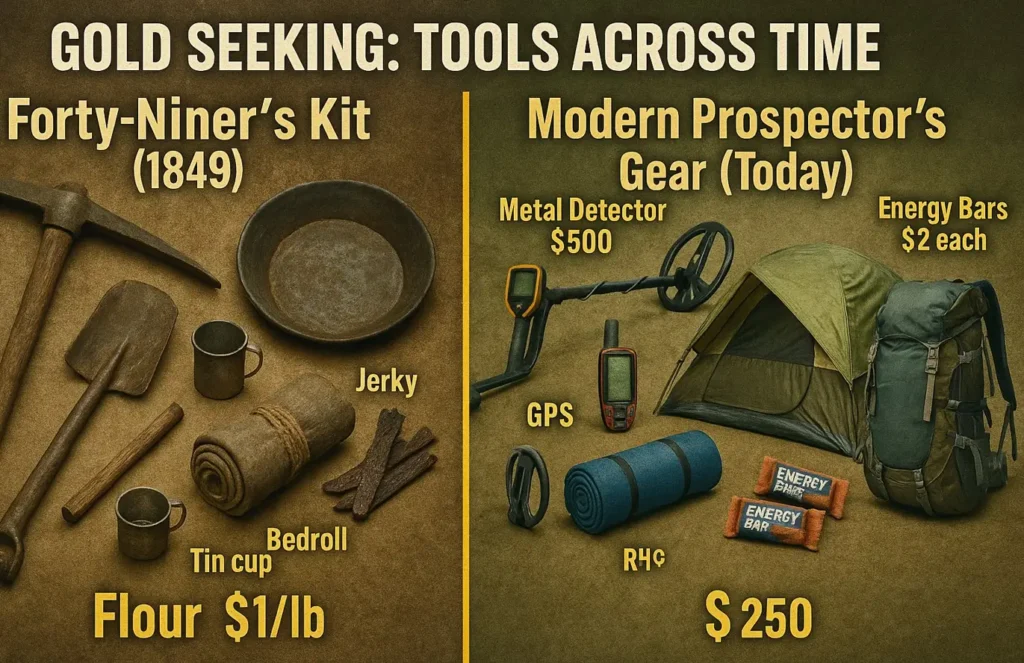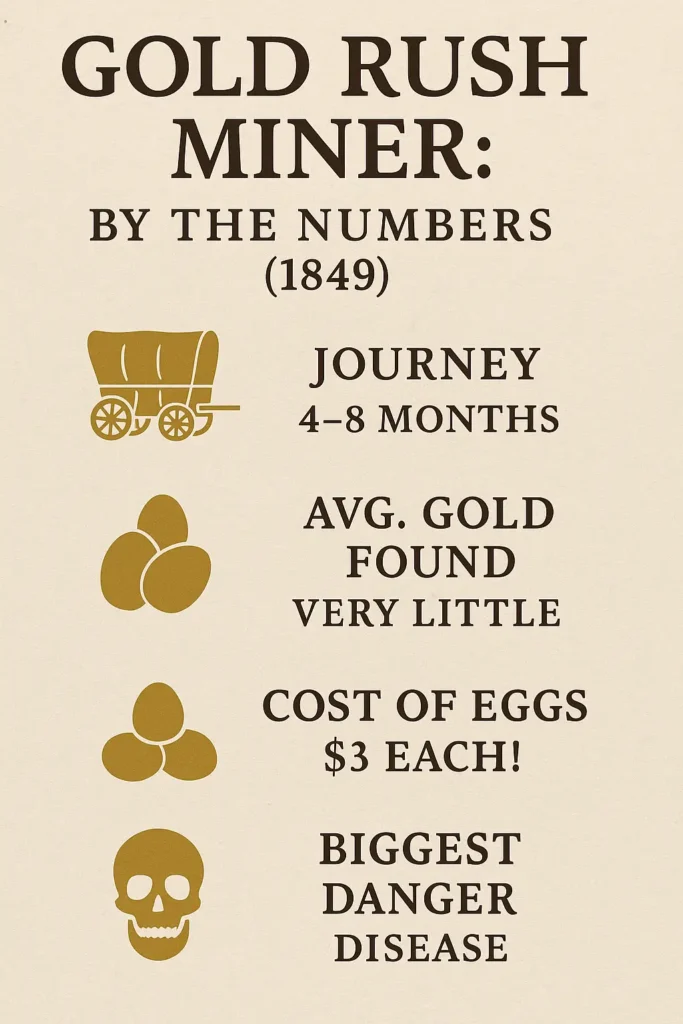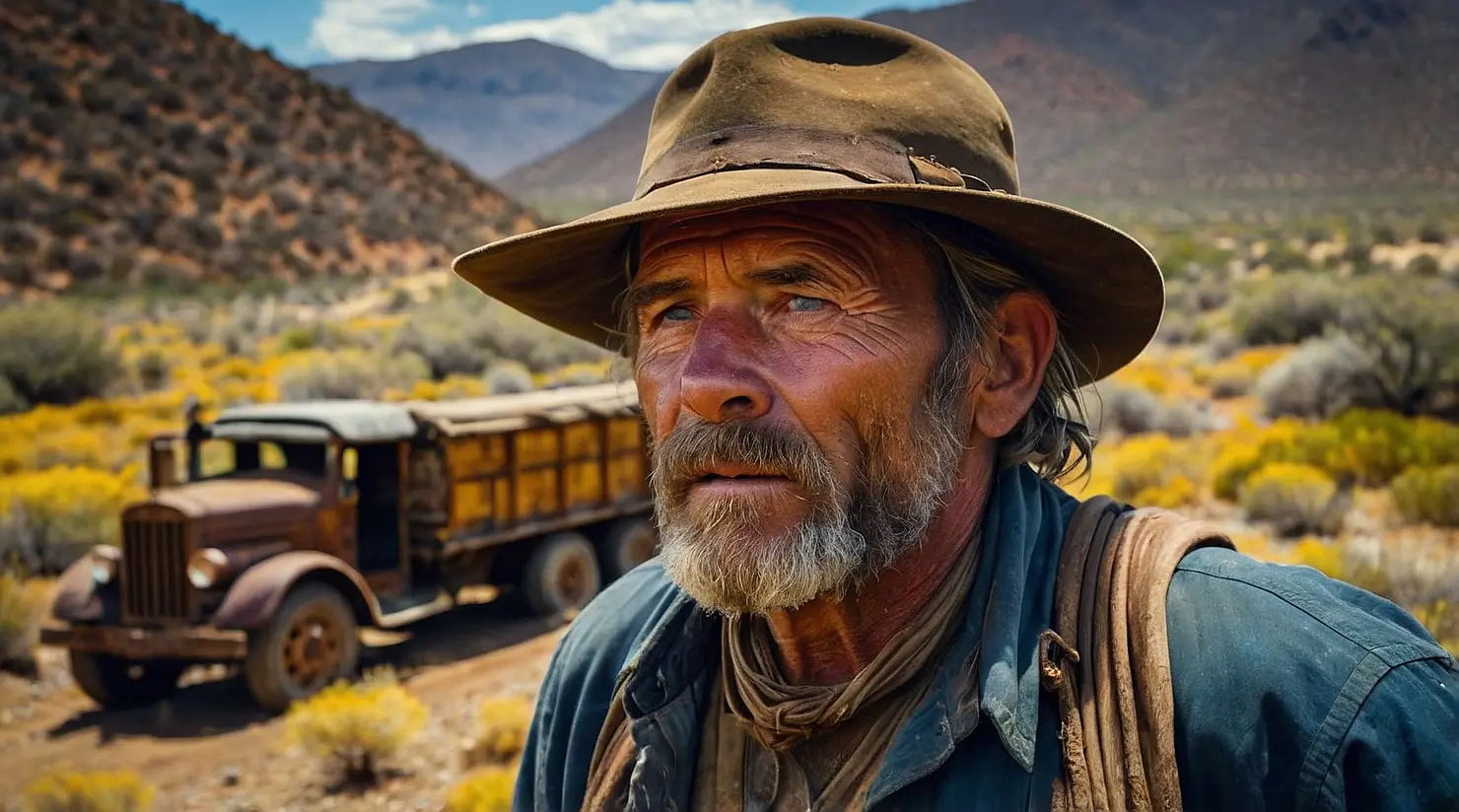The life of a gold rush miner during the California Gold Rush was one of hard work, high hopes, and often, bitter disappointment. Thousands, known as Forty-Niners, flocked to California seeking fortune.
In a Nutshell: Life of a Gold Miner
- You will learn about the tough journey and daily struggles of a Forty-Niner.
- You will understand the basic mining methods they used to find gold.
- You will see how the dream of riches shaped their difficult lives in mining camps.
Estimated reading time: 7 minutes
Imagine leaving everything behind for a chance at striking it rich. This was the reality for the Forty-Niners. News of gold discovery in 1848 at Sutter’s Mill spread like wildfire. It pulled people from all over the world to California, dreaming of a new life of a gold miner.
The Great Rush West
The journey to California was long and dangerous. Forty-Niners faced many challenges getting to the gold fields.
- By Sea: Many sailed for months. They went around the tip of South America or crossed the Isthmus of Panama. Both routes were risky, with storms and disease.
- Overland: Others traveled by wagon trains across North America. This journey took many months. They faced harsh weather, difficult land, and lack of supplies.
Once they arrived, the “gold fields” were often rough, crowded places. The easy-to-find gold was quickly taken. Miners had to work harder and harder. The initial excitement that fueled events like the California Gold Rush soon met the tough reality of a miner’s life.
Tools and Toil: A Miner’s Daily Grind
A gold miner’s day was filled with back-breaking labor. They used simple tools and methods.

- Panning: This was the most basic method. Miners used a shallow pan. They scooped up gravel and water from a stream. By swirling the pan, heavier gold would settle at the bottom.
- Sluice Boxes: As mining progressed, sluice boxes became common. These were long wooden troughs with riffles (barriers) along the bottom. Water washed gravel through the box. Gold got trapped by the riffles. This was one of the key techniques of gold mining during the Gold Rush.
- Cradles (Rockers): A cradle was like a sluice box that could be rocked. This helped to separate gold from dirt and gravel more quickly than panning alone.
- Coyote Holes and Tunnels: Some miners dug small, dangerous tunnels into hillsides. They chased veins of gold quartz. This was risky work.
The work was constant, from sunup to sundown. Many miners suffered from poor food, exhaustion, and sickness. The dream of finding a “bonanza” kept them going.
- Pack Smart: Bring sturdy tools, warm clothes, and some non-perishable food. Every ounce counts on the trail.
- Team Up: Working with honest partners is safer and can yield more gold than going it alone.
- Guard Your Health: Try to eat varied food if possible. Boil your water. Sickness takes down many.
- Be Realistic: Gold is rare. Don’t expect to get rich quick. Many don’t find much at all.
Life in the Mining Camps
Mining camps sprang up quickly wherever gold was found. These gold rush towns were often chaotic and rough.

Living Conditions
Buy Gold Online: The Smart and Secure Way
Discover the safest and most reliable strategies to buy gold online. Make informed investment decisions and secure your financial future today!
Learn More- Miners lived in makeshift tents, crude shacks, or even just slept outdoors.
- Food was expensive and often poor quality. Scurvy, from lack of fresh fruit and vegetables, was common.
- Clean water was scarce. Diseases like cholera and dysentery spread easily.
Camp Society
- Camps were mostly filled with men, though some women in the Gold Rush played vital roles as cooks, laundresses, or running businesses.
- There was often little law and order. Disputes were sometimes settled with fists or weapons.
- Despite the hardships, miners found ways to entertain themselves. They gambled, drank, and sometimes held dances or shows.
The desire for quick wealth created a unique, often lawless, environment. Even now, the drive for precious resources can lead to rapid development and unique challenges, as seen in some modern precious metals discussions.
Could You Be a Forty-Niner? (Gold Rush Check)
Fortunes Found and Lost
Only a very few Forty-Niners struck it rich. Most found just enough gold to survive, or nothing at all.
- The “Boom and Bust”: Easy surface gold was gone quickly. This led to cycles of excitement when a new strike was made, followed by disappointment.
- High Prices: Everything in the gold fields was very expensive. Merchants and suppliers often made more money than the miners themselves. A simple meal or basic tools could cost a fortune.
- Going Home Broke: Many miners spent all their savings and more. They eventually returned home with little to show for their efforts.
The economic impact was huge, however. The Gold Rush sped up California’s growth. It helped the United States expand. The intense focus on mineral wealth then, mirrors how, even in modern times, nations prioritize access to vital resources, sometimes through executive actions aimed at boosting domestic production.
The Enduring Spirit of the Forty-Niner
Though few became wealthy, the Forty-Niners were part of a huge moment in history. Their hard work and willingness to take risks changed America. They faced incredible hardship for a dream.
The life of a gold rush miner was a gamble. It was a mix of hope, sweat, and often, heartbreak. Their stories remind us of the power of a dream and the toughness of the human spirit.
Conclusion
The life of a Gold Rush miner was incredibly tough. They chased a dream of wealth against huge odds. While few struck it rich, these Forty-Niners helped build the American West. Their legacy is one of adventure, hardship, and the lasting pull of gold.
Your Questions About the Gold Rush Miner’s Life Answered
Who were the Forty-Niners?
What was a typical day like for a Gold Rush miner?
What were mining camps like?
Did many Gold Rush miners get rich?
What tools did Gold Rush miners use?
How did miners travel to California?
What dangers did Gold Rush miners face?


